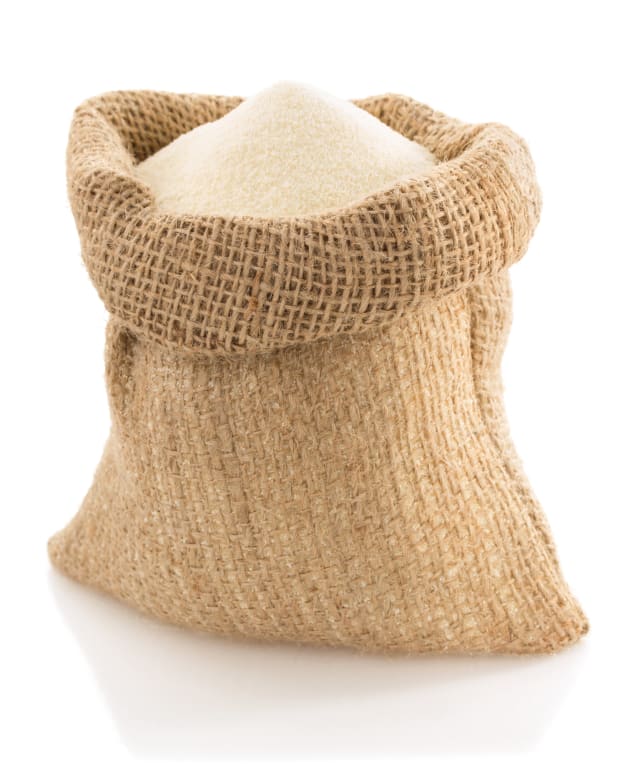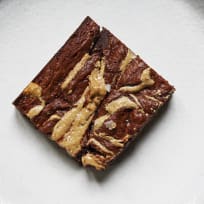Semolina Pudding
Amber Bracegirdle | Bluebonnet BakerYou may never had heard of semolina pudding, but it is a popular dish in the UK, where it is served as a dessert after a school lunch. Find out more about this comforting, creamy treat.
A traditional school lunch in the United Kingdom (or U.K.) is often followed by semolina pudding, a traditional school pudding. (Pudding is the British word for dessert.)
Also called semolina porridge, this warming and nourishing dish contains lots of milk, giving it a smooth, creamy texture that's a favorite of kids — just like British Rice Pudding!
Semolina pudding has long been a popular dish in Europe dating back to Roman times. A book of Roman recipes from the 4th century AD even refers to a semolina dish mixed with almonds, raisins, and raisin wine.
Have you ever had raisin wine?
Semolina pudding is also sometimes served as breakfast. And if we're being honest, some people who grew up eating it regularly aren't the biggest fans. But the nostalgia factor can't be underestimated, and it still has plenty of fans! Especially when it's properly made and relies on high-quality ingredients.
Our semolina pudding recipe can be served hot or cold and is great either way, although when it's cold, it tends to 'set' and be less runny.
You can reheat cooked, cooled semolina by putting it in a saucepan with a little extra milk, then warming it gently over a low heat and stirring well. And it doesn't just have to be served as a dessert — some people enjoy it for breakfast instead, similar to cream of wheat.
What is Semolina?
Semolina is made up of grains of finely milled wheat. Durum wheat — one of the world's most popular types of wheat — is used to produce semolina flour.
Occasionally referred to as durum wheat semolina, semolina is often used in Indian recipes too, like these Rav Laddoos. (That overlap between British and Indian foods isn't surprising, if you consider British colonial history.)
Tip: If you have gluten intolerance or celiac disease, read our FAQ answering the question is durum wheat semolina gluten free?
Despite going by a few different names, semolina is a wonderfully versatile ingredient.
Fine semolina has a soft, silky texture. As the name suggests, the durum wheat is ground to a much finer consistency. Fine semolina is generally used in desserts and puddings, such as in this recipe. It lends to the smooth, creamy texture of pudding.
Coarse semolina has a grittier texture and is generally used for making things like couscous and pasta or sometimes even pizza dough. Corn semolina is another kind of semolina flour made from ground corn kernels similar to polenta and used made the same way.
Likewise, rice semolina is a term used to refer to rice that has been washed and ground to a consistency similar to semolina.
Basic Ingredients for Semolina Pudding
You'll need these five ingredients to make your own semolina pudding. We love that it only requires a couple of elements, and is very simple to make! You'll master it in no time, but that doesn't mean this dish compromises on flavor.
- Fine semolina: Silky semolina flour is one of the main ingredients of semolina pudding.
- Milk: To add to the creaminess of this pudding, we suggest using whole milk or coconut milk.
- Granulated sugar: Simple white sugar lends sweetness to this popular dessert.
- Vanilla extract: We always suggest using pure vanilla extract for the best flavor.
- Salt: Just a pinch of salt adds balance to the sweetenss of semolina pudding.
That's all it takes to transport many U.K. natives to their childhood, or to set you up for success for making your own child's school pudding!
Tips for Making Semolina Pudding
If it's your first time making semolina pudding, it's important to know that semolina is meant to be smooth. If yours develops lumps, try breaking them up with a whisk for best results.
It also tends to thicken as it cooks, so if your semolina seems too runny, just cook it a little longer to achieve that signature creamy consistency.
Alternately, if you've over cooked it and it's too thick, just stir in a bit of extra milk to loosen it up!
Semolina Pudding Variations
Whilst this simple dish of semolina, milk, and sugar tastes great, there are lots of ways to make it even more interesting.
Try adding:
- Fresh fruit (try chopped ripe peaches or sweet, juicy berries)
- Cooked fruit (applesauce or berry compote are good options)
- Dried fruit (raisins work well, as do chopped, dried apricots)
- Chocolate (either add cocoa powder to the dry semolina before you start cooking, or grate chocolate over the finished dish at the end)
- Coconut (sweetened dessicated coconut tastes amazing)
- Zest (try lime, orange, or lemon zest with a dash of freshly squeezed juice).
- Aromatic spices (nutmeg and cinnamon are our favorites — cardamom powder works well, too!)
- Jam (a dollop of jam adds depth and sweetness)
More School Pudding Recipes
Here are some more delicious desserts traditionally served after lunch in UK schools:
Maybe you grew up with one (or all!) of these recipes or maybe you're exploring British cuisine for the first time. Either way, these recipes will set you on the right path!
Semolina Pudding
Ingredients
- 50 grams Fine Semolina
- 600 milliliters Milk
- 1 teaspoon Pure Vanilla Extract
- 1 tablespoon Fine Granulated Sugar
Directions
- Place the semolina into a small saucepan on the stove top and mix with a few tablespoons of the milk until it forms a smooth paste.
- Slowly stir in the remaining milk and the vanilla extract.
- Bring the mixture almost to the boil over medium heat, then immediately lower the heat and simmer for a few minutes.
- Add the sugar and continue to cook, stirring well, for a few more minutes.
- Cool for a few minutes before serving. Add optional toppings (above) if you desire.
- Published:
- Modified:
- Author:
- Amber Bracegirdle
- Cuisine:
- British
- Category:
- Desserts
- Tags:
- Desserts, Pudding, British, Semolina
- Related Recipes:
- Dessert Recipes, Pudding Recipes, British Recipes, Semolina Recipes
- Recipe Yields:
- 2 servings
- Prep Time:
- Cook Time:
- Total Time:
- Related Post:
-
Published:
Author: Amber Bracegirdle
Recipe Yields: 2 servings
Prep Time: 5 minutes
Cook Time: 5 minutes
Total Time: 10 minutes
Nutrition Facts
Amount Per Serving













